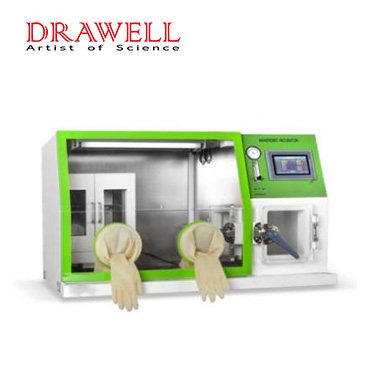A Comprehensive Insight into the Features and Operations of Anaerobic Incubators
Body
Anaerobic incubators are indispensable tools in microbiological laboratories, facilitating the cultivation and manipulation of anaerobic microorganisms in a controlled environment. This guide delves into the features, gases, and utilization of anaerobic incubators, offering insights into their selection and safe operation.

Exploring Anaerobic Incubator Features
Airtight Seal: Prevents oxygen ingress, maintaining an anaerobic atmosphere within the chamber.
Gas Inlet and Outlet Ports: Facilitate the introduction and venting of anaerobic gas mixtures.
Gas Flow Control: Regulates gas flow rate to establish and sustain desired anaerobic conditions.
Gas Mixing System: Automatically blends nitrogen and carbon dioxide gases for optimal gas composition.
Temperature Control: Enables precise temperature regulation for microbial growth.
Humidity Control: Maintains suitable moisture levels for specific culture requirements.
Anaerobic Indicators: Visual cues indicating the absence of oxygen in the chamber.
Safety Features: Alarms for gas leaks, temperature deviations, and overpressure conditions ensure user and culture safety.
Interior Shelving or Racks: Accommodate culture vessels for efficient space utilization.
Observation Window: Allows visual monitoring of cultures without compromising the anaerobic environment.
User-Friendly Interface: Intuitive controls for easy setup and monitoring.
Data Logging and Connectivity: Advanced models offer data logging and connectivity options for enhanced monitoring and analysis.
Understanding Anaerobic Incubator Gases
Anaerobic incubators primarily utilize nitrogen and carbon dioxide gases to create and maintain an oxygen-free environment conducive to anaerobic microbial growth:
Nitrogen (N2): Purges the chamber of oxygen, creating an inert atmosphere.
Carbon Dioxide (CO2): Maintains a low redox potential, preventing the accumulation of reducing compounds and supporting microbial metabolic processes.
Applications of Anaerobic Incubators
Anaerobic incubators find extensive use across various fields, including:
Clinical Microbiology: Culturing and identifying anaerobic bacteria responsible for infections.
Food Microbiology: Studying anaerobic bacterial growth in food to prevent spoilage and foodborne illnesses.
Environmental Microbiology: Investigating anaerobic microbial diversity and functions in natural ecosystems.
Biotechnology: Producing enzymes, antibiotics, and other biotechnological products from anaerobic microorganisms.

Utilizing Anaerobic Incubators
Installation: Confirm compatibility, clean the chamber, install gas supply, and set temperature and humidity parameters.
Maintenance: Regularly inspect for leaks, ensure proper gas flow, and monitor temperature and humidity levels. Promptly address any issues to maintain optimal performance.
Conclusion
Anaerobic incubators are indispensable tools for the cultivation and study of anaerobic microorganisms. By providing a controlled environment free of oxygen, these incubators enable researchers to explore microbial worlds and unlock their potential applications across various scientific disciplines. When choosing an anaerobic incubator, consider your specific research needs, safety features, and manufacturer support to ensure successful microbial cultivation and experimentation.











Comments